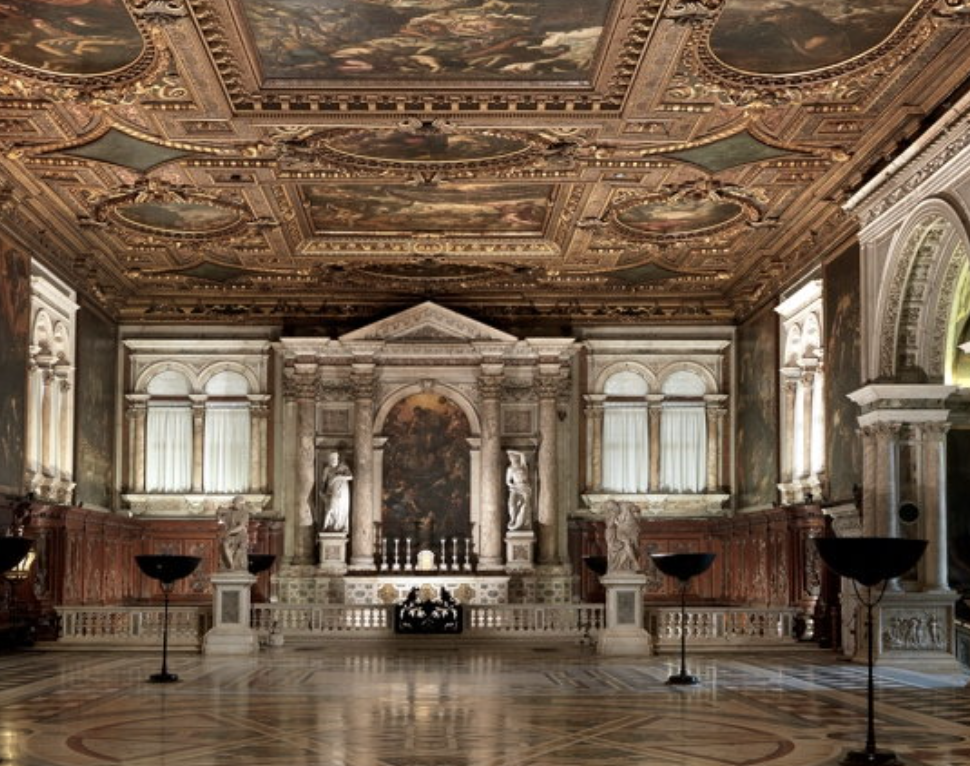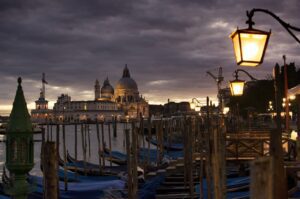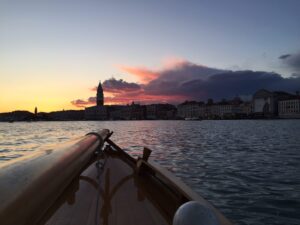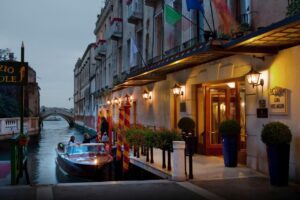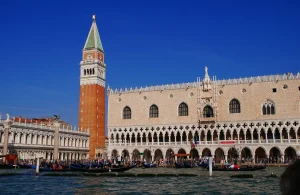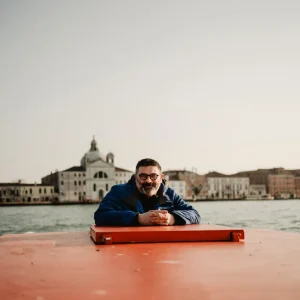Venice, with its dreamy canals, crumbling facades, and floating silence, has no shortage of jaw-dropping landmarks. But tucked away from the buzzing crowds of St. Mark’s Square, just a short walk from the Frari Church in the San Polo district, lies a place that often escapes the average tourist itinerary—the Scuola Grande di San Rocco. For lovers of Renaissance art and seekers of spiritual beauty, it’s nothing short of a revelation.
Step inside, and you’ll be swallowed whole by the swirling drama of Jacopo Tintoretto, Venice’s own master of light and shadow. This isn’t your average gallery. It’s an immersive visual sermon painted across walls and ceilings, still resonating with the energy of an artist who defied rules, outwitted his rivals, and left behind a universe in brushstrokes.
🏛️ A Glimpse into the History of the Scuola Grande di San Rocco
Founded in 1478, the Scuola was one of Venice’s six major confraternities—lay brotherhoods that combined religious devotion with charitable work. This one was dedicated to Saint Roch (San Rocco), the patron saint invoked during plague times. Given Venice’s long and tragic entanglement with disease, the Scuola played both a spiritual and practical role in the city’s survival.
The building you see today was constructed between 1515 and 1560, a handsome, Renaissance structure designed with solemn grace. The real transformation happened when the Scuola commissioned a series of religious artworks to adorn its halls. That’s where Tintoretto enters the frame—quite literally.
🎭 Tintoretto: The Rebel of Renaissance Venice
Jacopo Robusti, better known as Tintoretto, was known as “Il Furioso” for his fiery brushwork and relentless ambition. Born in Venice in 1518, he trained briefly under Titian but soon developed his own electric style, fusing Venetian colorism with Michelangelo-inspired drama.
When the Scuola announced a competition for the ceiling of the Sala dell’Albergo in 1564, Tintoretto saw his opportunity—and seized it with borderline audacity. While others submitted sketches, he installed a finished painting (“St. Roch in Glory”) in the ceiling frame without permission, claiming it as a gift to the saint. The strategy worked. Rather than rebuke him, the confraternity awarded him the commission. He went on to spend over 20 years decorating the entire building, leaving behind a collection unmatched anywhere in Europe.
🖼️ What to See Inside: Tintoretto’s Epic Cycle
Sala Terrena: The Entrance into Darkness and Light
As you step through the Scuola’s doors, the first thing that hits you is the scale. The Sala Terrena, or ground hall, is filled with colossal canvases lining the walls—episodes from the New Testament, each one pulsating with emotion. “The Annunciation,” “The Flight into Egypt,” and “The Adoration of the Magi” stand out not just for their size, but for the way Tintoretto manipulates perspective and light. You’ll notice figures half-illuminated, as if stepping into spiritual consciousness, while others lurk in deep, smoky shadows.
Sala dell’Albergo: The Spiritual High Point
Arguably the most dramatic room, the Sala dell’Albergo is where the “Crucifixion” takes center stage—a vast and chaotic swirl of bodies, faces, and suffering that feels almost cinematic. This is Tintoretto at his most ferocious, pulling you into the pain and mystery of faith. Spend time here. Sit. Let your eyes wander. Every corner has a story fighting to be seen.
Sala Superiore: The Grand Finale
Upstairs, the Sala Superiore glows with a golden halo of biblical drama. The ceiling is a dense tapestry of Old Testament scenes, with “Moses Striking Water from the Rock” and “The Fall of Manna” among the highlights. Don’t forget to look up—Tintoretto’s ceiling work is like a dance of angels and fire, blending movement and meaning in every panel.
🧭 How to Visit the Scuola Grande di San Rocco
Visiting the Scuola is refreshingly simple compared to the more crowded Venetian landmarks. Here’s what you need to know:
📍 Location: Campo San Rocco, San Polo district. It’s right next to the Frari Church and a 10-minute walk from the Rialto Bridge.
🚶 Getting There:
Take Vaporetto Line 1 or 2 and get off at San Tomà. From there, it’s a five-minute walk through Venice’s charming backstreets. You’ll see signs pointing toward the Scuola and the Frari.
🕰 Opening Hours:
Open daily from 9:30 AM to 5:30 PM (last entrance 5 PM). It’s closed on Christmas and New Year’s Day.
🎟 Tickets:
Standard entry is around €10. Students and seniors get a reduced rate. You can purchase tickets at the door or online through their official site.
🗣 Language Tips:
Most plaques and guides are in Italian and English. You might want to grab an audio guide (available on-site) or download a virtual guide to get the most from the art.
✨ Pro Tips for Making the Most of Your Visit
-
Arrive Early: Mornings are quietest. Arrive just after opening for a near-private experience.
-
Bring Binoculars: Yes, really. The ceiling paintings are intricate, and a small pair of travel binoculars can enhance the experience.
-
Don’t Rush: This is a place to linger, reflect, and absorb. Plan at least 90 minutes here.
-
Pair it with the Frari: Right next door, the Basilica di Santa Maria Gloriosa dei Frari houses Titian’s “Assumption of the Virgin” and his tomb. It’s a perfect companion piece to Tintoretto’s work.
-
Photography: You’re allowed to take non-flash photos, but please be respectful—this is still a sacred space.
🌍 Nearby Attractions to Complete Your Itinerary
-
Campo San Polo: One of Venice’s largest squares, great for people-watching or grabbing a quiet espresso.
-
Scuola Grande di San Giovanni Evangelista: Another stunning brotherhood with lesser-known but equally rich artworks.
-
Ca’ Rezzonico: A museum of 18th-century Venice housed in a palazzo right on the Grand Canal.
-
Rialto Market: If you’re into local flavors, grab some fruit or a snack by the canal and soak in the vibe.
📚 Final Thoughts: Why It Matters
The Scuola Grande di San Rocco isn’t just a stop on an art tour—it’s a full-body encounter with faith, ambition, and the explosive power of Renaissance art. Tintoretto poured his soul into these walls, crafting a space that feels less like a museum and more like a meditation.
And perhaps that’s the best part: while crowds shuffle past each other in front of the Bellini altarpiece or flood the Doge’s Palace, here, in this hushed chamber of shadows and light, you can stand alone, face to face with genius.

